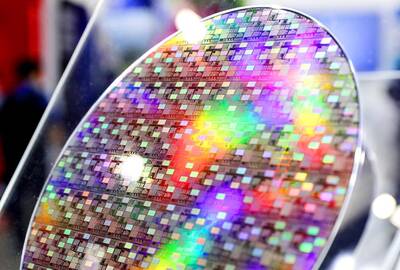Japanese Prime Minister Taro Aso pledged ¥1.5 trillion (US$17 billion) in development aid to other Asian countries yesterday for infrastructure projects that will help boost growth.
The prime minister highlighted Japan’s involvement in projects in the Mekong region and the Delhi-Mumbai industrial corridor and said overseas development assistance (ODA) would increase by 20 percent this year.
“Japan is ready to provide ODA not less than ¥1.5 trillion, or about US$17 billion in total,” he told the World Economic Forum.
Japan’s official development aid, an important diplomatic tool for the country since the end of World War II, has historically focused on Southeast Asian countries.
Turning to the causes of the global financial crisis, Aso pointed to the responsibility of leading exporting countries such as Japan and China in what his spokesman said was a call to end the blame-game.
Russian Prime Minister Vladimir Putin and Chinese Premier Wen Jiabao (溫家寶) made forceful speeches pointing the finger at the US for its overconsumption and poorly regulated banking sector.
“To put the world economy back onto a stable growth trajectory, one imperative is correcting the global imbalance that has arisen from overconsumption in the United States and insufficient internal demand in other countries,” Putin said.
“Countries must shed their dependence on external demand,” he said.
Elsewhere, Aso announced a new emissions plan for the country and reiterated a pledge last November to lend US$100 billion to the IMF.
“We are examining our mid-term target [for emissions reductions] based on scientific analyses ... and I intend to announce the target in June,” he said.
Aso also highlighted Japan’s own efforts to increase domestic demand with stimulus packages worth a total of ¥75 trillion, calling for other countries to adopt similar economic policies.
Also in Davos, Japanese Trade Minister Toshihiro Nikai and Farm Minister Shigeru Ishiba were expected to propose a plan to cut or lift tariffs on environmentally friendly products at an informal meeting of WTO members, the Nikkei Shimbun reported.
The proposal is aimed at promoting trade in goods such as lithium-ion batteries and solar power generation systems, which could help address global warming, it said.
These are areas in which Japanese companies are strong.
Aso left on Friday on a lightning visit to the Davos gathering, where he also underlined the ability of Japan to take a leadership role to help the Asian economy power global growth.
The prime minister, embroiled in a stormy session of the politically divided parliament, was to spend only six hours in the Swiss mountain resort and return to Tokyo later today.

WAITING GAME: The US has so far only offered a ‘best rate tariff,’ which officials assume is about 15 percent, the same as Japan, a person familiar with the matter said Taiwan and the US have completed “technical consultations” regarding tariffs and a finalized rate is expected to be released soon, Executive Yuan spokeswoman Michelle Lee (李慧芝) told a news conference yesterday, as a 90-day pause on US President Donald Trump’s “reciprocal” tariffs is set to expire today. The two countries have reached a “certain degree of consensus” on issues such as tariffs, nontariff trade barriers, trade facilitation, supply chain resilience and economic security, Lee said. They also discussed opportunities for cooperation, investment and procurement, she said. A joint statement is still being negotiated and would be released once the US government has made

NEW GEAR: On top of the new Tien Kung IV air defense missiles, the military is expected to place orders for a new combat vehicle next year for delivery in 2028 Mass production of Tien Kung IV (Sky Bow IV) missiles is expected to start next year, with plans to order 122 pods, the Ministry of National Defense’s (MND) latest list of regulated military material showed. The document said that the armed forces would obtain 46 pods of the air defense missiles next year and 76 pods the year after that. The Tien Kung IV is designed to intercept cruise missiles and ballistic missiles to an altitude of 70km, compared with the 60km maximum altitude achieved by the Missile Segment Enhancement variant of PAC-3 systems. A defense source said yesterday that the number of

‘CRUDE’: The potential countermeasure is in response to South Africa renaming Taiwan’s representative offices and the insistence that it move out of Pretoria Taiwan is considering banning exports of semiconductors to South Africa after the latter unilaterally downgraded and changed the names of Taiwan’s two representative offices, the Ministry of Foreign Affairs (MOFA) said yesterday. On Monday last week, the South African Department of International Relations and Cooperation unilaterally released a statement saying that, as of April 1, the Taipei Liaison Offices in Pretoria and Cape Town had been renamed the “Taipei Commercial Office in Johannesburg” and the “Taipei Commercial Office in Cape Town.” Citing UN General Assembly Resolution 2758, it said that South Africa “recognizes the People’s Republic of China (PRC) as the sole

Taiwanese exports to the US are to be subject to a 20 percent tariff starting on Thursday next week, according to an executive order signed by US President Donald Trump yesterday. The 20 percent levy was the same as the tariffs imposed on Vietnam, Sri Lanka and Bangladesh by Trump. It was higher than the tariffs imposed on Japan, South Korea and the EU (15 percent), as well as those on the Philippines (19 percent). A Taiwan official with knowledge of the matter said it is a "phased" tariff rate, and negotiations would continue. "Once negotiations conclude, Taiwan will obtain a better